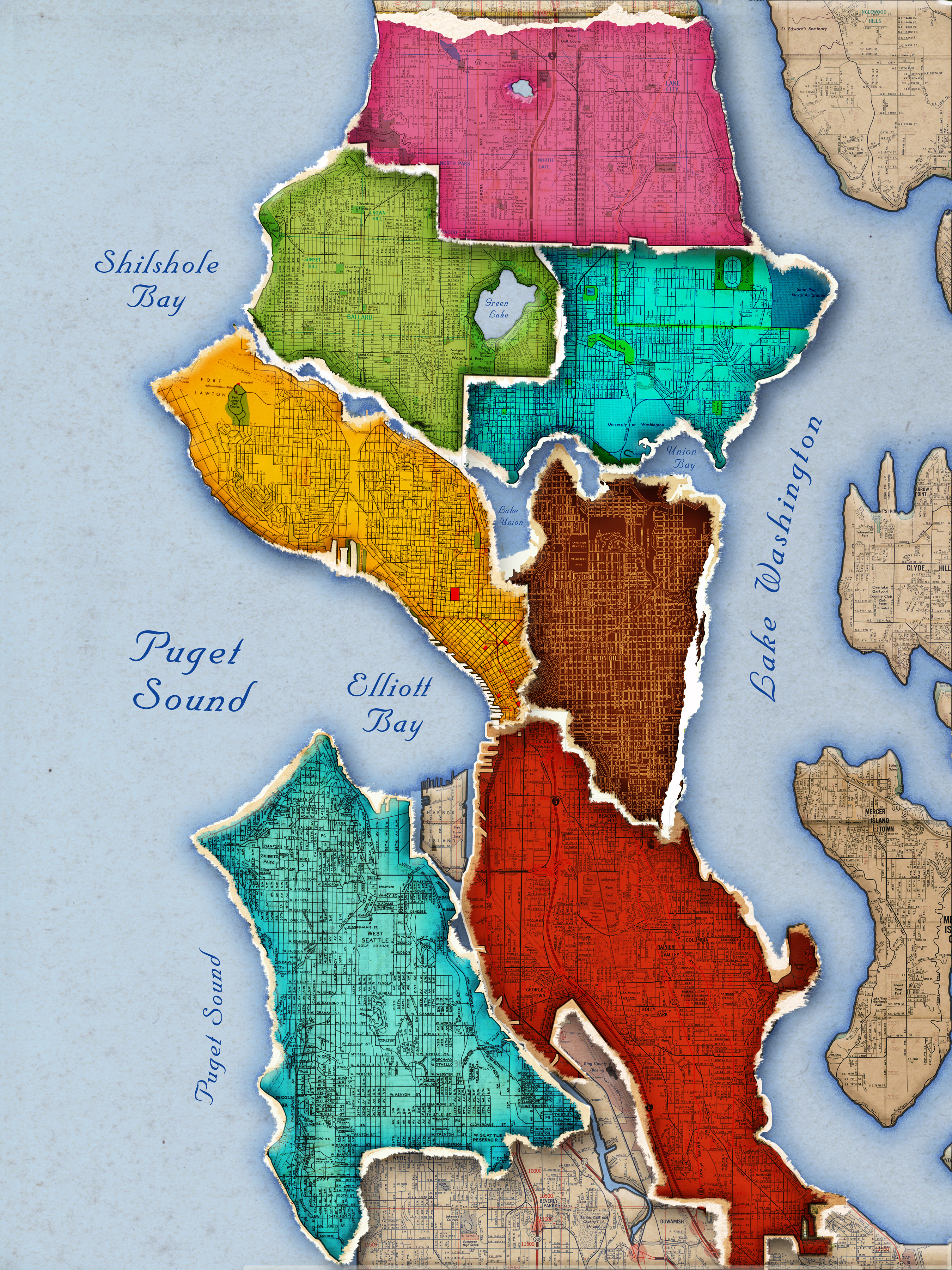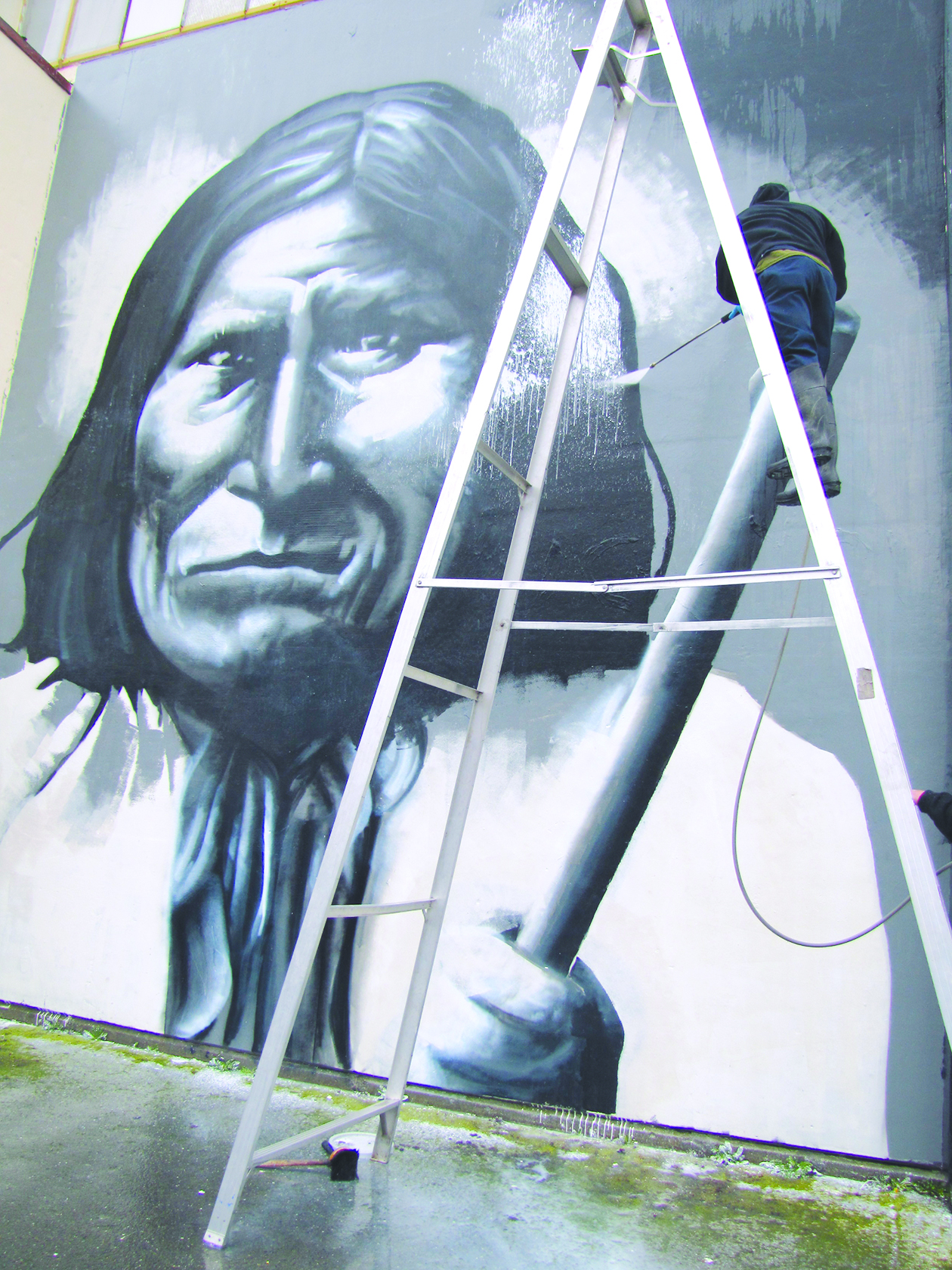On a clear day, heading south on Aurora from Acme Auto Electric, you can see the downtown skyline. With six lanes of traffic buzzing by and a slew of sleazy motels, prostitutes, and used-car dealerships between here and there, it feels like a different city from the one that Amazon, the Space Needle, and City Hall call home.
Curtis Gehrke’s family opened Acme Auto Electric in 1944, and on a sunny autumn afternoon his “retired” dad still helps behind the counter. Not counting a cat named Chica who gets feisty if you don’t pet her behind the ears and a miniature statue of James Brown by the cash register, Acme Auto Electric has five employees—three of them family members. Over the years, according to Gehrke, city government has kept its eye on downtown while ignoring the issues he confronts as a local business owner on a daily basis—big issues like crime, public safety, and where to build a new police station, and smaller issues like parking and storm-water drainage. Two years ago, he says, a purse-snatcher busted into his waiting room and made off with an elderly woman’s handbag. In the past he’s shot video of the nefarious drug and prostitution activity at the bus stop across the street and shown the footage to city officials, to little avail.
“I think the city does what it wants to do,” Gehrke says of the perceived neglect. “I feel like they don’t care or listen to the small people.”
It’s here, along the city’s most infamous thoroughfare—and largely from the pocketbook of one woman—that Charter Amendment 19 and Seattle’s new city council districts were born. The amendment, which in many ways flew under the radar this election season, will split the city into seven council districts, each of which will send a councilmember to City Hall, starting with the 2015 elections. Another two members will be elected at large, as all members now are.
From the viewpoint of Faye Garneau, the longtime executive director of the Aurora Merchants Association who ponied up $265,000 of her own money for the district elections campaign, and business owners like Gehrke, the new districts are a chance to get the voice in council chambers that their piece of north Seattle has been lacking far too long. Currently, no city council member calls Seattle’s new District 5—with Northgate at its heart—home.
With broad bipartisan backing—from Garneau, who voted for Mitt Romney, to Mayor Mike McGinn, who did not, to the Trotsky-quoting socialist city council candidate Kshama Sawant—Charter Amendment 19 was overwhelmingly passed by Seattle voters last week. Proponents of the new plan say it’ll provide a fair and equal representation on the council that the at-large system couldn’t. It’ll bring smaller names back into the political process, they argue, and make doorbelling and handshaking as important as big-money backing and citywide name recognition.
But in Seattle’s ethnically diverse southeast corner, far from Aurora’s cheap hotels and struggling family-owned businesses, some aren’t so sure about the new districts. These are also the voices of “small people.” Just as the businesses and residents of north Seattle will have one council seat to call their own, so too will southeast Seattle—effectively lumping the bulk of the Emerald City’s Black, Latino, and Asian voters into a single district. According to 2010 census estimates, 33.7 percent of Seattle residents are people of color. By and large, they live south of Yesler Way—which happens to be the northernmost boundary of the newly created District 2. The majority of neighborhoods in this district are more than 60 percent minority, according to a census breakdown; some are as high as 87 and 91 percent. (For comparison, north Seattle’s District 5 neighborhoods average 20–40 percent persons of color.)
According to Chris Stearns, the former head of Seattle’s Human Rights Commission, history hasn’t always been kind to minorities when it comes to the creation of electoral districts; elections can be influenced by the lines mapmakers draw, and minority voices can be silenced. “That’s really what the concern is rooted in,” says Stearns, who’s pushing for a study of just what Seattle has gotten itself into with its new districts.
“It isn’t that [Charter Amendment 19 supporters] did something intentional,” he says, “it’s just, what if . . . there’s an unintentional outcome that could be bad for [people of color]?”
The man responsible for Seattle’s new districts map is Richard Morrill, a retired geography professor from the University of Washington. The nearly 80-year-old Morrill is no stranger to his craft. He served as the Special Master to the federal court-ordered redistricting of Washington state in 1972, and advised the state of Mississippi on its own redistricting efforts for racial fairness from 1977 to 1983—just two notable landmarks in a geography career that has spanned half a century.
Pressed on the fairness of his map, Morrill is unflinching. “It’s very fair,” he says. Typically, if you wanted to disenfranchise a minority, you would draw the district lines to split the group to prevent it from voting as a single politically effective bloc. “I was very careful not to break up any ethnic populations,” Morrill says. “I think the right minority could win in any of the districts.”
Along with making sure all districts were within 1 percent of each other in overall population and keeping traditional neighborhoods intact, Morrill says achieving racial fairness was his top priority.
There’s no question that Seattle’s new districts do not break up the city’s ethnic strongholds. The only potential problem: Seattle only has one of them.
As Stearns sees it, a city with a minority population of 33 percent should have more than one “guaranteed” spot on the council representing these voices. He wonders if a more creative map could have created two districts with ethnic majorities, noting that Morrill’s rigid map, which boxes in Seattle’s southeast district, “looks like something drawn on a tic-tac-toe board.”
City Councilman Bruce Harrell, the current council’s only minority and a resident of District 2, says the old system presented problems, but noted there was an upside for minorities. “I always saw [minorities] as a necessary voting bloc,” says Harrell. “All [candidates] had to be accountable to that bloc. . . . Now that dynamic goes away.”
Asked point-blank whether the new district map is fair, Harrell takes a long pause.
“I don’t know. I just don’t know,” he says finally. “It is what it is now.”








